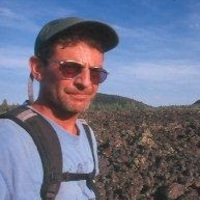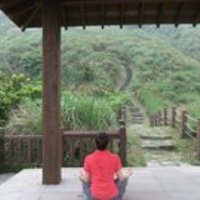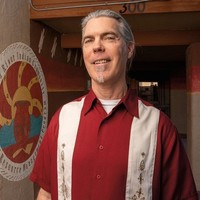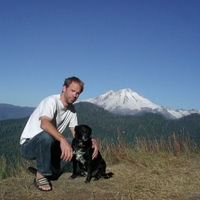
James Heidke
Desert Archaeology, Inc. research projects have led to interests in fired clay container and figurine analyses, the emergence of pottery, petrographic method and theory, quantitative methods, and Southwestern archaeology.
I have been privileged to be employed by Desert Archaeology, Inc. ― a CRM firm located in Tucson, AZ ― since 1984. As DAI’s primary ceramicist I have extensive experience analyzing Native American pottery made during the Early Agricultural period (2100 B.C. – A.D. 50), Early Ceramic period (A.D. 50 – 500), Hohokam Pioneer, Colonial, Sedentary, and Classic periods (A.D. 500 – 1450), Protohistoric period (A.D. 1450 – 1694), and Historic period (A.D. 1694 – early 1900s). Pottery made during the 2100 B.C. – A.D. 700 span represents the first occurrence and development of the craft in the Tucson area; references for gray literature chapters and journal articles discussing that topic can be found in my “Teaching Documents” (below). Working in close collaboration with eight petrographers I’ve developed an objective and testable method for the binocular microscopic identification of sand temper provenance that has been applied in the Tucson, Phoenix, and Tonto basins, Lower Verde Valley, and Flagstaff areas of Arizona. An important aspect of that research relates to the statistical analysis of sand and sand temper composition point-count data (i.e., petrofacies modeling).
Phone: 520-881-2244
Address: Desert Archaeology, Inc.
3975 N. Tucson Blvd.
Tucson, AZ 85716-1037
I have been privileged to be employed by Desert Archaeology, Inc. ― a CRM firm located in Tucson, AZ ― since 1984. As DAI’s primary ceramicist I have extensive experience analyzing Native American pottery made during the Early Agricultural period (2100 B.C. – A.D. 50), Early Ceramic period (A.D. 50 – 500), Hohokam Pioneer, Colonial, Sedentary, and Classic periods (A.D. 500 – 1450), Protohistoric period (A.D. 1450 – 1694), and Historic period (A.D. 1694 – early 1900s). Pottery made during the 2100 B.C. – A.D. 700 span represents the first occurrence and development of the craft in the Tucson area; references for gray literature chapters and journal articles discussing that topic can be found in my “Teaching Documents” (below). Working in close collaboration with eight petrographers I’ve developed an objective and testable method for the binocular microscopic identification of sand temper provenance that has been applied in the Tucson, Phoenix, and Tonto basins, Lower Verde Valley, and Flagstaff areas of Arizona. An important aspect of that research relates to the statistical analysis of sand and sand temper composition point-count data (i.e., petrofacies modeling).
Phone: 520-881-2244
Address: Desert Archaeology, Inc.
3975 N. Tucson Blvd.
Tucson, AZ 85716-1037
less
Related Authors
Mary Ownby
University of Arizona
Mark Elson
University of Arizona
Miriam Stark
University of Hawaii at Manoa
Henry D . Wallace
Desert Archaeology, Inc.
Michael Diehl
Desert Archaeology, Inc.
Scott Van Keuren
University of Vermont
Sarah Herr
Desert Archaeology, Inc.
InterestsView All (362)









Uploads
Papers by James Heidke
Numerous mid-to-late 19th century and early 20th century accounts of Tohono O’odham pottery making and distribution contradict the findings of a mid-20th century ethnographic study that found potters only made vessels during the hot summer months. Here those earlier published reports are used to evaluate when pottery making may have taken place at the Tucson Basin Hohokam archaeological site known as West Branch.
spread of pottery technology in the North American Southwest as a
unitary and uniform phenomenon. Rather, at least three distinct episodes of innovation and development can now be identified. The first pertains to the initial development of ceramic technology by inhabitants of the southern Southwest, and appears related to ritual behaviors. The second is characterized by the rapid adoption of a more sophisticated domestic, utilitarian ceramic container technology throughout
the area. The third episode encompasses the time when pottery
containers first became essential to a wide range of domestic activities and their potential for symbolic expression and information exchange began."
Numerous mid-to-late 19th century and early 20th century accounts of Tohono O’odham pottery making and distribution contradict the findings of a mid-20th century ethnographic study that found potters only made vessels during the hot summer months. Here those earlier published reports are used to evaluate when pottery making may have taken place at the Tucson Basin Hohokam archaeological site known as West Branch.
spread of pottery technology in the North American Southwest as a
unitary and uniform phenomenon. Rather, at least three distinct episodes of innovation and development can now be identified. The first pertains to the initial development of ceramic technology by inhabitants of the southern Southwest, and appears related to ritual behaviors. The second is characterized by the rapid adoption of a more sophisticated domestic, utilitarian ceramic container technology throughout
the area. The third episode encompasses the time when pottery
containers first became essential to a wide range of domestic activities and their potential for symbolic expression and information exchange began."